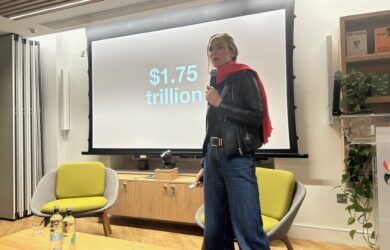Victoria Lee had set her heart on becoming a doctor from an early age. Her great grandparents had been medical missionaries in Africa and she was inspired by their achievements and by the life of Albert Schweitzer. “I wanted to contribute to society,“ she said.
However, when she got to MIT, she realised that medicine was not for her. In her second year, she got the chance to become an associate adviser for first-years and was paired up with an architecture professor who encouraged her to take an architecture course which helped reignite her “innate“ interest in the subject. She says she had always been interested in architecture, but had never considered it as a career before. “I always love designing and putting things together; Lego was one of my favourite toys,” she says.
She then had the opportunity to work on a research project investigating an efficient and low-cost construction system that can quickly mass-produce housings in emergency situation.
“The project was a theoretical exercise, but it made me realise that architecture and design can be a service to help improve people’s lives.” says Victoria. At the end of her second year she switched to architecture.
Victoria was born in Taiwan, but her family moved to California after she finished elementary school. She says the move was mainly because her parents wanted to improve the educational opportunities for their children.
Victoria says starting middle school in a new country was not so easy because of the language barrier. She had to take classes at school for children whose first language was not English and she had to overcome some cultural differences. Nevertheless, she adapted well and says the “strict pedagogy” of her primary education in Taiwan prepared her well.
She also took part in several extracurricular activities throughout her education, such as school orchestra, science- and maths-related team competitions and contests, as well as volunteering in a hospital. At university she wrote for a student newspaper and worked as a peer health advocate, distributing medical information to students. She also volunteered as a tour guide at the Museum of Fine Arts, Boston (MFA) for a few years, introducing visitors to world class artworks including statues and coffins from Egypt, Buddhist sculptures from China, paintings from Impressionists like Monet and Renoir, portraits from Copley, and abstract works from Pollock.
?After completing her undergraduate degree, Victoria stayed on at MIT as a graduate student to pursuit a professional degree in architecture. It was during this time that she travelled to one of the poorest areas in Ecuador to work on a school/community centre project as an architectural assistant. Later she also travelled to Turkey to work on a reconstruction project in an area which had been destroyed by the 1999 earthquake.
“I was trying to find a niche in the field of architecture which would suit me,” she says. “I wanted what I was doing to make a tangible contribution to society. Most architects only design for a very small percentage of the world’s population. I want to do something for everyone else.”
One year into her graduate studies she had the chance to do an MPhil in architecture at Cambridge that combined taught courses and research.
She says she enjoyed the design-oriented professional degree at MIT, but felt that she was losing sight of what she wanted to do in the field of architecture. She wanted a program that combined scientific research, creativity and architecture skills. The Martin Centre, an interdisciplinary architectural research centre in the Department of Architecture at Cambridge, offered that opportunity. “Looking at the subject from other perspectives can give you fresh insights,” she says.
She returned to the US in 2008 to finish her professional degree in architecture. She finished this in January and says she will still have to do three years of professional practice and take an exam before she can become a licensed architect. She thinks it might be a while before she does this as she is keen, in the mean time, to do more research into the risks in the built environment and to see how her research can be applied in the humanitarian field.
Since she finished her professional degree programme, she has worked as a project assistant at the Shelter Centre, an NGO in Geneva. The organisation supports humanitarian operations that respond to the settlement and reconstruction needs of populations affected by conflicts and natural disasters. Victoria was part of a team working on a publication of guidelines regarding the implementation of shelter assistance following a disaster.
She had applied to the Gates Trust before she started her work at the Shelter Centre and had been in Geneva for only five days when she was interviewed for the scholarship via Skype. “We had some technical difficulties so I couldn’t see the panel, although they could see me,” she said. “It was quite an interesting experience.”
Her PhD will further the work she did for her MPhil when she investigated the mismatches between how well a building can resist earthquakes and how effectively it can protect occupants from challenging climates, such as hurricanes and cold winters. “There are a lot of buildings in the world that need to resist both the long term and short term hazards, but are designed for neither purpose or only for one,” she says. She will be tackling the research from an interdisciplinary viewpoint. “You have to look at problems from different perspectives, from an engineering, social, cultural and economic viewpoint as well as an architectural one. A lot of problems are multi-layered so it is essential that there is input from all disciplines. My skills as an architect are only as useful as the extent of understanding I have of the problem I want to solve,” she says.












